When you’re writing API documentation or user guides for medical devices, you know that engineers and other field professionals are your primary readers.
However, what happens when you have to describe a product to a reader who lacks that kind of specialized knowledge?
Writing the docs the wrong way can cost you a lot of money if customers don’t know how to use your products.
That’s why a good technical writer knows how to adjust their writing style to match the needs of different audiences.
This article will take you through six tips you can implement to optimize your writing for non-technical readers.
We’ll start with a step you have to take before you start writing, and that’s identifying the audience’s needs.
Understand Your Readers’ Needs
Before you begin writing the first sentence, you have to establish who you are writing for and what your readers want to achieve by reading the document.
That’s especially important when writing for non-technical audiences, as their goals may differ from what you’re used to.
As a tech writer, you’re likely fascinated by the intricacies of the products you’re writing about daily. Still, you have to bear in mind that your readers probably don’t feel the same way.
While writers might be interested in how things work, an average reader just wants to know how to get things done, according to Dave Aronson, a software development consultant.

Source: Quora
That’s why Aronson suggests being mindful not to get bogged down by the details when writing for non-technical readers.
We’ll now see a piece of technical writing where the authors clearly identified the readers’ needs and wrote the user guide for a dishwasher accordingly.
While writing the manual, the authors kept all optional technical details at a minimum and focused on providing straightforward instructions.
For instance, the guide outlines the problem of the door falling open and offers the solution in three words: “increase spring tension.”
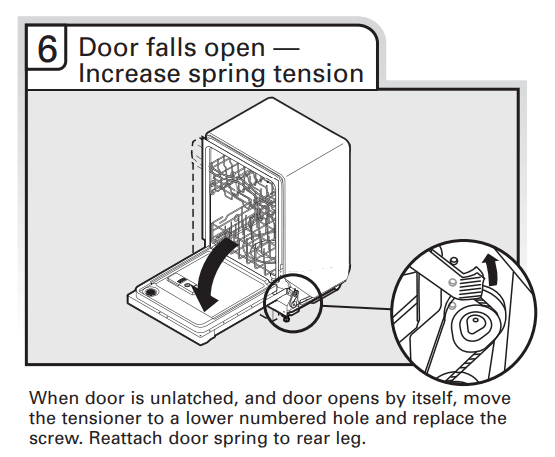
Source: Home Depot
Note how the authors didn’t go on about Hooke’s law or spring equilibrium length—they knew the readers would only be interested in the actions they needed to take to get the appliance up and running.
So, if you want to make your docs successful, you have to write them in line with your readers’ expectations, as the authors of the guide above did.
You should take into account that a non-technical reader doesn’t have the same level of understanding and knowledge of the topic as you do, which means that you might have to scale back the level of technical detail you’ll include.
Of course, there’s no reason to go the opposite way and oversimplify the docs, or worse, fill them with redundant information your readers already know.
According to Google’s official technical writing course, good documentation forgoes repeating the audience’s current knowledge and only adds what they need to accomplish tasks.
Here’s the equation:

Source: Google Developers
With that in mind, it’s better to focus only on crucial, new information.
And remember, people only read technical documents when they want to accomplish something.
When you determine what the audience wants to accomplish, you’ll be able to offer relevant and understandable instructions.
Avoid Using Technical Jargon
While technical language can facilitate communication with other experts, it can be detrimental to non-technical audiences, which is why you should tone down the use of jargon when writing for non-technical readers.
Think about it: when you’re trying to assemble a shelf you’ve just bought or figure out how to number pages in Microsoft Word, the last thing you want is having to learn what a Pozidriv or a status bar is.
Your readers are the same. They want to get information in an approachable format.
Unfortunately, judging by posts on social media, technical writers still have a way to go until their documents are understandable to non-technical audiences.
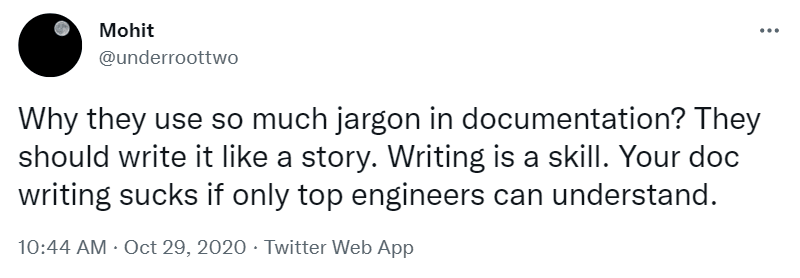
Source: Twitter
So, what can you do to optimize your language for non-technical readers?
The most straightforward solution is to use plain English instead of specialized vocabulary wherever possible.
Some writing tools, such as Grammarly, offer suggestions when the software detects a word that could be replaced with a simpler version.
You could use such tools to scan your writing for unclear language.
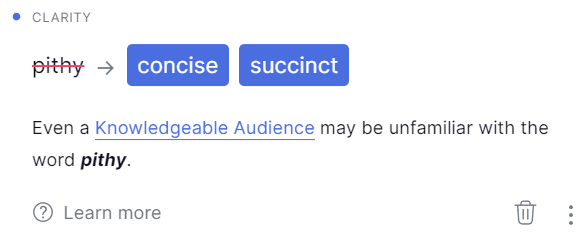
Source: Grammarly
However, there are cases where the use of some jargon is inevitable.
For instance, if you’re writing a user guide for a monitor, you’ll have to use the word HDMI at some point.
Instead of avoiding relevant terminology, you could explain the meaning behind specialized vocabulary, abbreviations, and acronyms the first time you mention them.
In this particular case, you could include an illustration of an HDMI cable.
But since you can’t use visual aids to explain each technical term, you could compose a glossary or a reference guide for your readers.
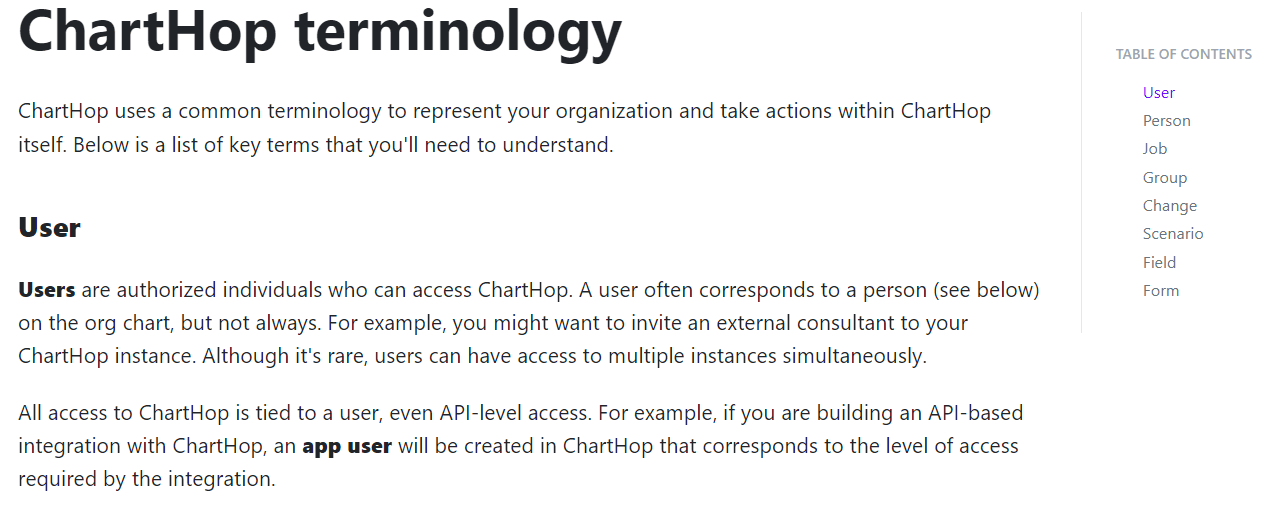
Source: ChartHop
The image above shows the terminology guide of ChartHop, an HR analytics tool.
Having a dedicated section where you elaborate on potentially confusing terminology will help your non-technical readers understand the processes you’re describing throughout the document.
To sum up, if you can avoid using technical jargon, you should do so.
In cases where specialized vocabulary is absolutely necessary, do your best to clarify the meaning of all technical terms.
Focus on Explaining Why
As much as technical writing should be focused on providing instructions, sometimes it’s better also to explain why something is done and provide your audience with context.
If you’re used to working with professional audiences and are trying to optimize your content for non-technical readers, you’ll have to add explaining the background to your repertoire of technical writing practices.
Megan Sullivan, a developer educator, advises that tech writers provide context before listing the instructions.
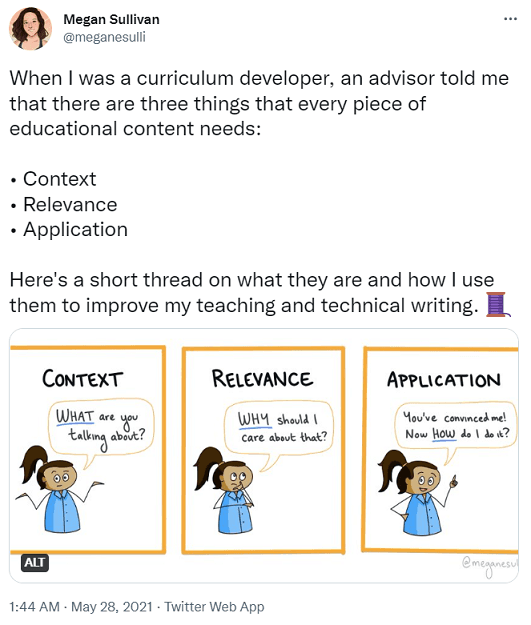
Source: Twitter
According to Sullivan, people who read technical documents come from a variety of backgrounds, and it’s the tech writer’s task to build a shared understanding before laying out the details.
And similarly to what we outlined in the previous section, Sullivan emphasizes how important it is to reduce the use of jargon when writing for non-technical audiences.

Source: Twitter
Let’s take a look at an example of a technical document where authors managed to neatly explain the background of a feature without cluttering the doc or overwhelming the user.
This Home Depot’s ceiling fan installation manual lists that the fan comes with summer and winter operation modes that you activate by pressing or releasing the reverse switch.
A reader could doubt that such a simple action could affect the temperature, so the instructions explain what each operation mode does in simple terms—no thermodynamics knowledge required.
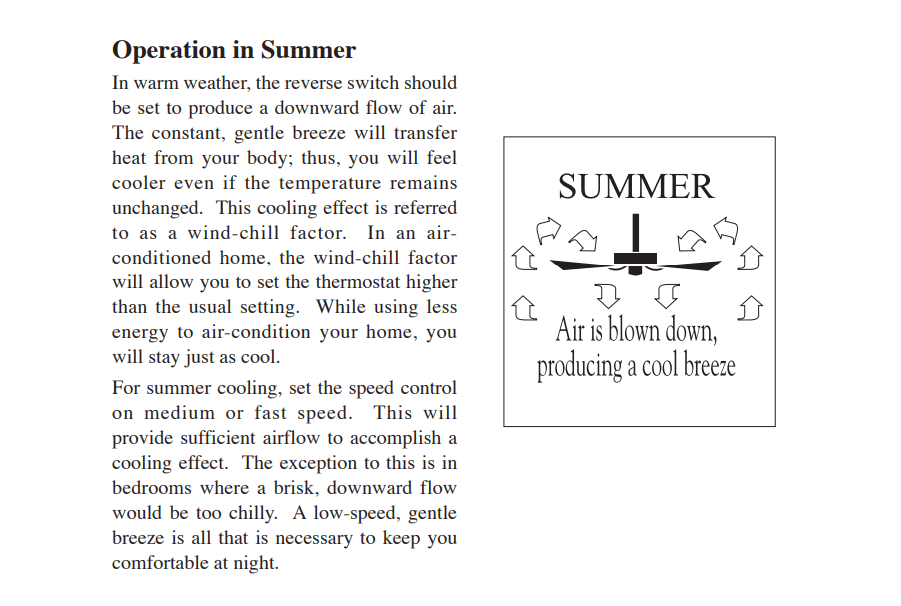
Source: Home Depot
While you shouldn’t go overboard with explanations in places where readers only want to learn how to complete a task, talking about the background of the product will help you better demonstrate its capabilities.
It’s up to tech writers to determine the suitable amount of background information depending on the document type and the product itself.
Prioritize a Clear Documentation Structure
The quality of information isn’t the only thing that matters in technical writing—the way you organize the document is as important.
Since you don’t want the reader to wander around the doc looking for the next step they need to take, you should organize the content in a logical, easy-to-follow order, explaining the process from start to finish so that it is easier to navigate.
A clear documentation structure should be noticeable as soon as the reader opens the table of contents.
The following Mitsubishi AC guide is a great example of a well-organized technical document.
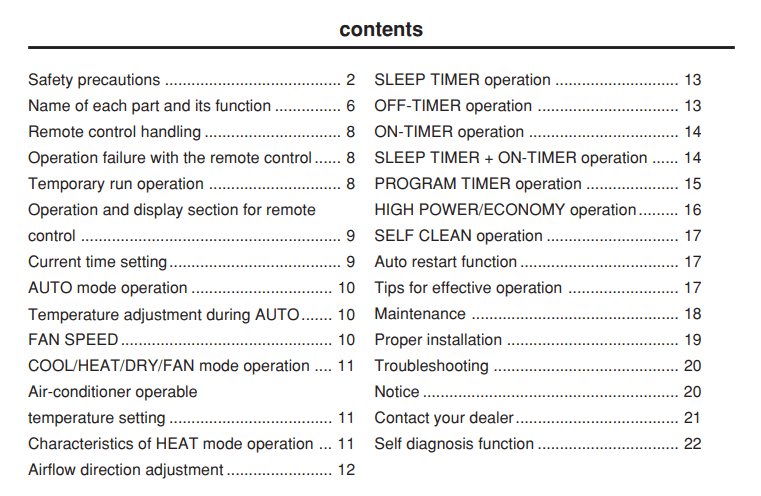
Source: Mitsubishi
As you can see, the doc begins with the information users need to operate the device safely.
After the safety precautions, readers are immediately provided with a list of device parts, their illustrations, and names.
Once the reader is equipped with the basic knowledge, the instructions show how they can start using the device.
First, different operations are outlined one by one, and each has a descriptive heading.
You can also notice the clear structure within these smaller parts of the document. Each section starts with the operation description and lists the steps necessary for activation.
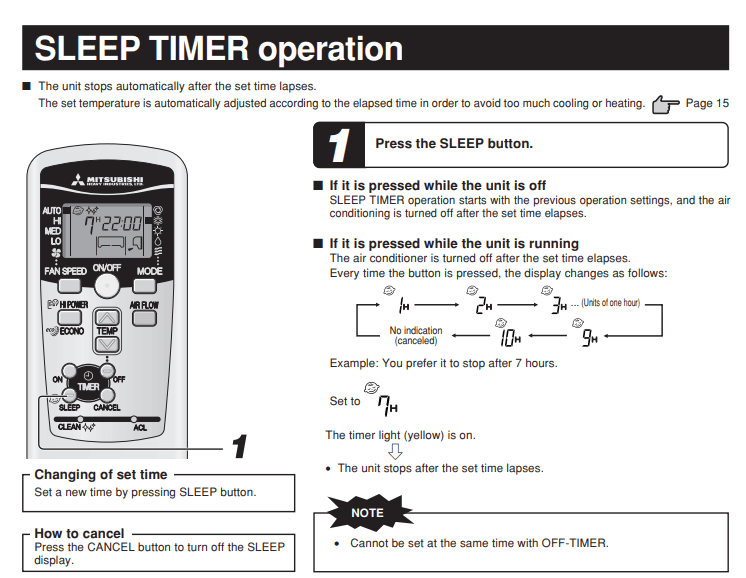
Source: Mitsubishi
After all operations are laid out, the guide offers instructions for maintenance and troubleshooting.
Including such material earlier would interrupt the flow of information, so it was logical to leave it for the end of the document.
You should implement the same approach: try to think about the order in which the readers will interact with the product and organize the instructions correspondingly.
That way, you’ll create an easily navigable document that customers can use effortlessly.
Include Visual Cues in Your Content
Technical information is not always straightforward, especially to non-technical audiences. You can use visual cues to simplify the information and make your documents more understandable.
But before you rush off to commission a technical illustrator, you first need to know when to use visual cues so that they improve the understanding, not impede it.
An important tip to remember is not to overcrowd the docs with visuals in cases when a written explanation suffices.
However, when you’re explaining a concept that’s difficult to grasp or demonstrating a process, your readers will benefit from a visual clarification.
For instance, this illustration from an AC manual demonstrates how to open the remote control, which could be a non-intuitive action for users who haven’t performed it before.
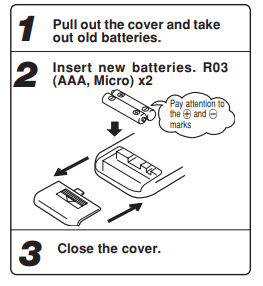
Source: Mitsubishi
The illustration also serves as a reminder to pay attention to battery terminals.
Illustrations are just one type of visual cues you can use to represent information. Depending on what you’re describing, you could also use charts, graphs, diagrams, or tables.
Don’t forget that you can also use visual elements in technical documentation related to software. Screenshots are especially useful tools for that purpose.
When you’re teaching readers how to use your app, you can help them save time by accompanying the instructions with screenshots that tell them where exactly they have to click.
Here’s an example of how Discord does that across their help center.
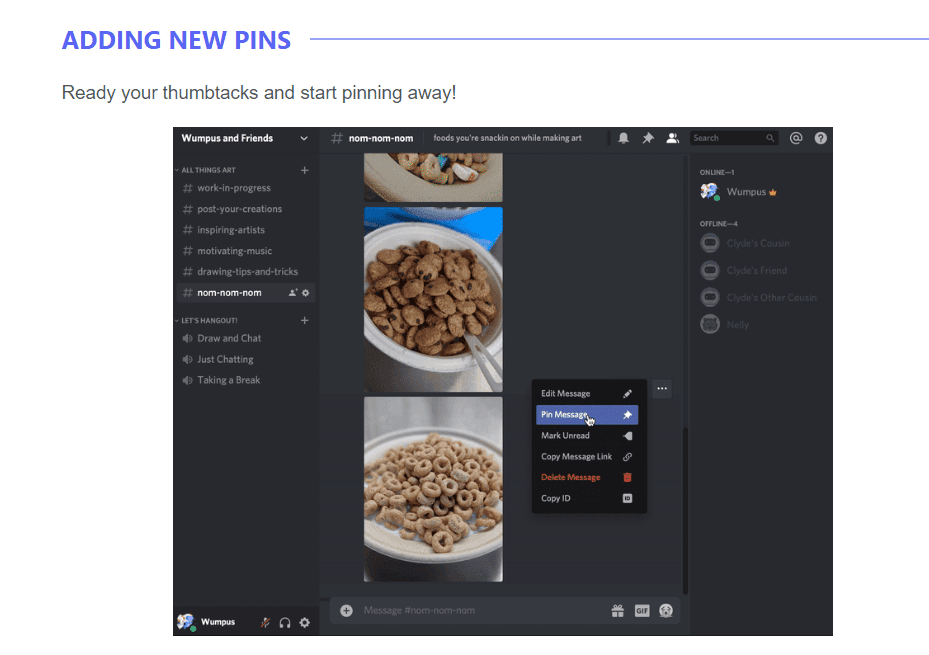
Source: Discord
Keep in mind that if an action only takes a step or two, you probably don’t need visual elements to describe it.
But when you’re writing about concepts that may not be obvious to non-technical people, visual cues are powerful tools for conveying information.
Just make sure they work in tandem with the rest of the content—don’t use them for decoration.
Have a Layperson Read It
For the final step of writing for non-technical audiences, you have to ensure that you’ve covered the subject clearly enough.
And there’s no better way to do that than by asking a member of the target audience to read the document.
Technical writing is one of the few areas where knowing more doesn’t make you better at your job.
In fact, it can make things more complicated because sometimes you’ll find yourself unable to explain the concepts you’ve taken for granted.
For instance, this software engineer acknowledges that writing for non-technical readers exposes their own knowledge gaps.

Source: Twitter
There’s even a name for the phenomenon: it’s called the curse of knowledge.
According to Google’s technical writing course, experts often suffer from it, meaning that “their expert understanding of a topic ruins their explanations to newcomers.”
Cade Biegel, a tech content expert, mentions external feedback from the target audience as the solution to the challenge.
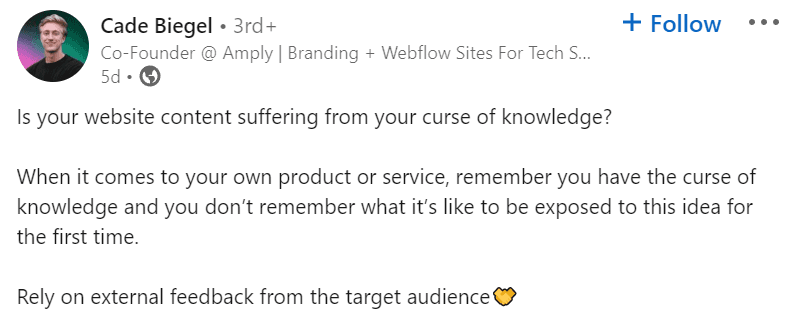
Source: LinkedIn
Luckily, if you’re writing documentation intended for non-technical audiences, finding somebody to test the docs shouldn’t be a problem.
You could ask a coworker or a family member who is on a similar level of understanding of the topic as the target audience to go over the document and flag any occurrences where you left the content too technical.
So, if you’re designing documentation for non-tech people, use that to your advantage.
You don’t have to spend much on official testing strategies—asking a layperson to read the docs will do.
Conclusion
There’s no way to write technical documentation without using no technical words whatsoever. Fortunately, nobody expects you to.
You can help non-technical audiences understand products and procedures by adjusting your writing style, structuring the document neatly, and supplementing the instructions with visual elements.
So, the next time you tackle tech writing, make sure you implement these tips to make the documentation accessible to readers from all backgrounds.
Frequently Asked Questions
Knowing who you’re writing for shapes everything from the vocabulary you choose to the depth of detail you include. Non-technical readers usually want to complete a task quickly, not master the underlying theory, so tailoring content to their goals makes instructions clearer, faster to follow, and safer to use. Start by asking: Who are they? What do they already know? What do they need to accomplish? What constraints (time, device, environment) are they under? Then adjust reading level, terminology, structure, and visuals accordingly. The result is documentation that reduces confusion, lowers support requests, and helps readers succeed on the first try.



